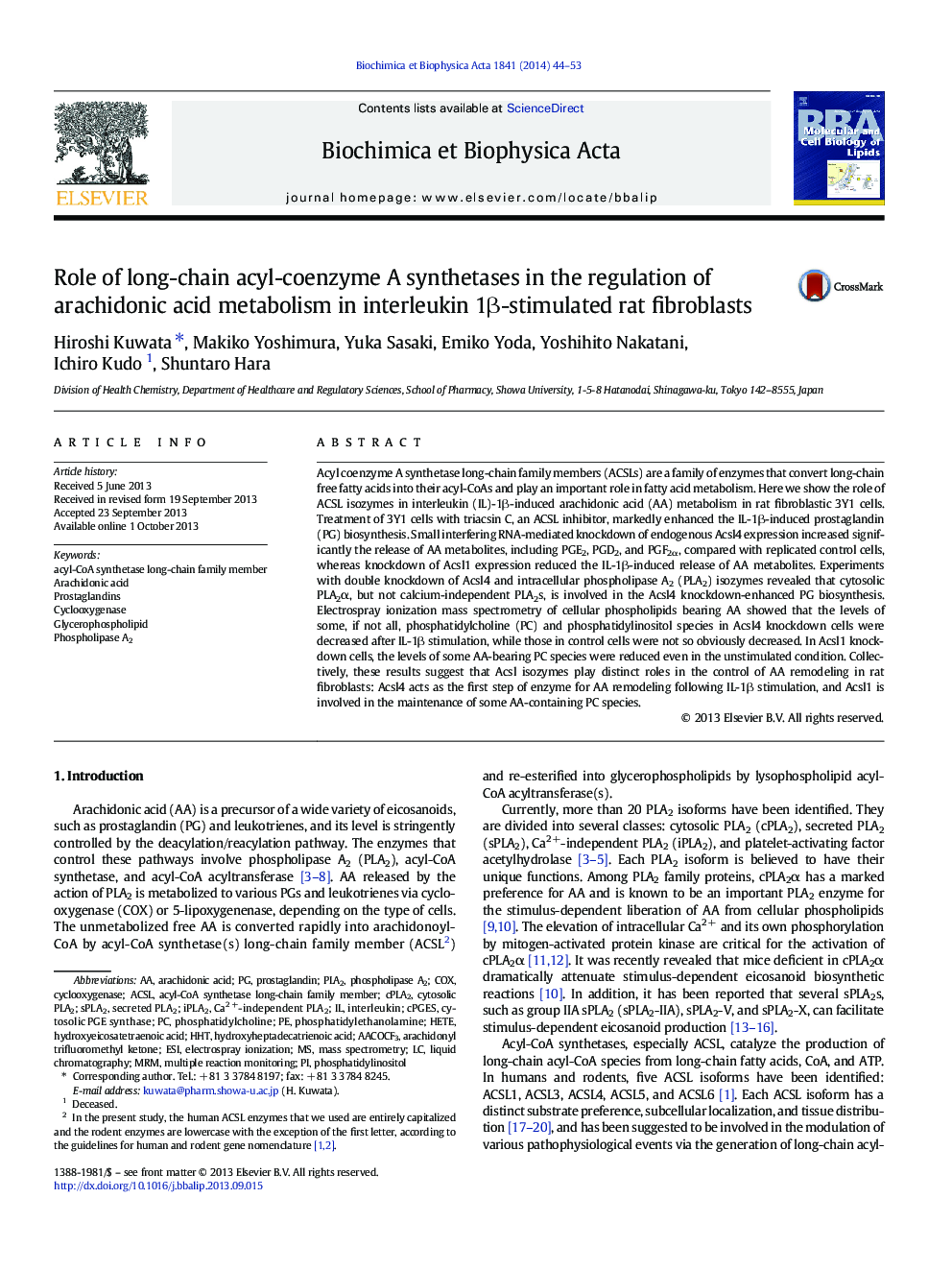| کد مقاله | کد نشریه | سال انتشار | مقاله انگلیسی | نسخه تمام متن |
|---|---|---|---|---|
| 1949288 | 1537734 | 2014 | 10 صفحه PDF | دانلود رایگان |

• This work shows the roles of Acsl isozymes in AA metabolisms.
• Knockdown of Acsl4 resulted in enhanced release of AA metabolites from fibroblasts.
• Knockdown of Acsl1 altered the levels of several AA-bearing phospholipids in fibroblasts.
Acyl coenzyme A synthetase long-chain family members (ACSLs) are a family of enzymes that convert long-chain free fatty acids into their acyl-CoAs and play an important role in fatty acid metabolism. Here we show the role of ACSL isozymes in interleukin (IL)-1β-induced arachidonic acid (AA) metabolism in rat fibroblastic 3Y1 cells. Treatment of 3Y1 cells with triacsin C, an ACSL inhibitor, markedly enhanced the IL-1β-induced prostaglandin (PG) biosynthesis. Small interfering RNA-mediated knockdown of endogenous Acsl4 expression increased significantly the release of AA metabolites, including PGE2, PGD2, and PGF2α, compared with replicated control cells, whereas knockdown of Acsl1 expression reduced the IL-1β-induced release of AA metabolites. Experiments with double knockdown of Acsl4 and intracellular phospholipase A2 (PLA2) isozymes revealed that cytosolic PLA2α, but not calcium-independent PLA2s, is involved in the Acsl4 knockdown-enhanced PG biosynthesis. Electrospray ionization mass spectrometry of cellular phospholipids bearing AA showed that the levels of some, if not all, phosphatidylcholine (PC) and phosphatidylinositol species in Acsl4 knockdown cells were decreased after IL-1β stimulation, while those in control cells were not so obviously decreased. In Acsl1 knockdown cells, the levels of some AA-bearing PC species were reduced even in the unstimulated condition. Collectively, these results suggest that Acsl isozymes play distinct roles in the control of AA remodeling in rat fibroblasts: Acsl4 acts as the first step of enzyme for AA remodeling following IL-1β stimulation, and Acsl1 is involved in the maintenance of some AA-containing PC species.
Journal: Biochimica et Biophysica Acta (BBA) - Molecular and Cell Biology of Lipids - Volume 1841, Issue 1, January 2014, Pages 44–53